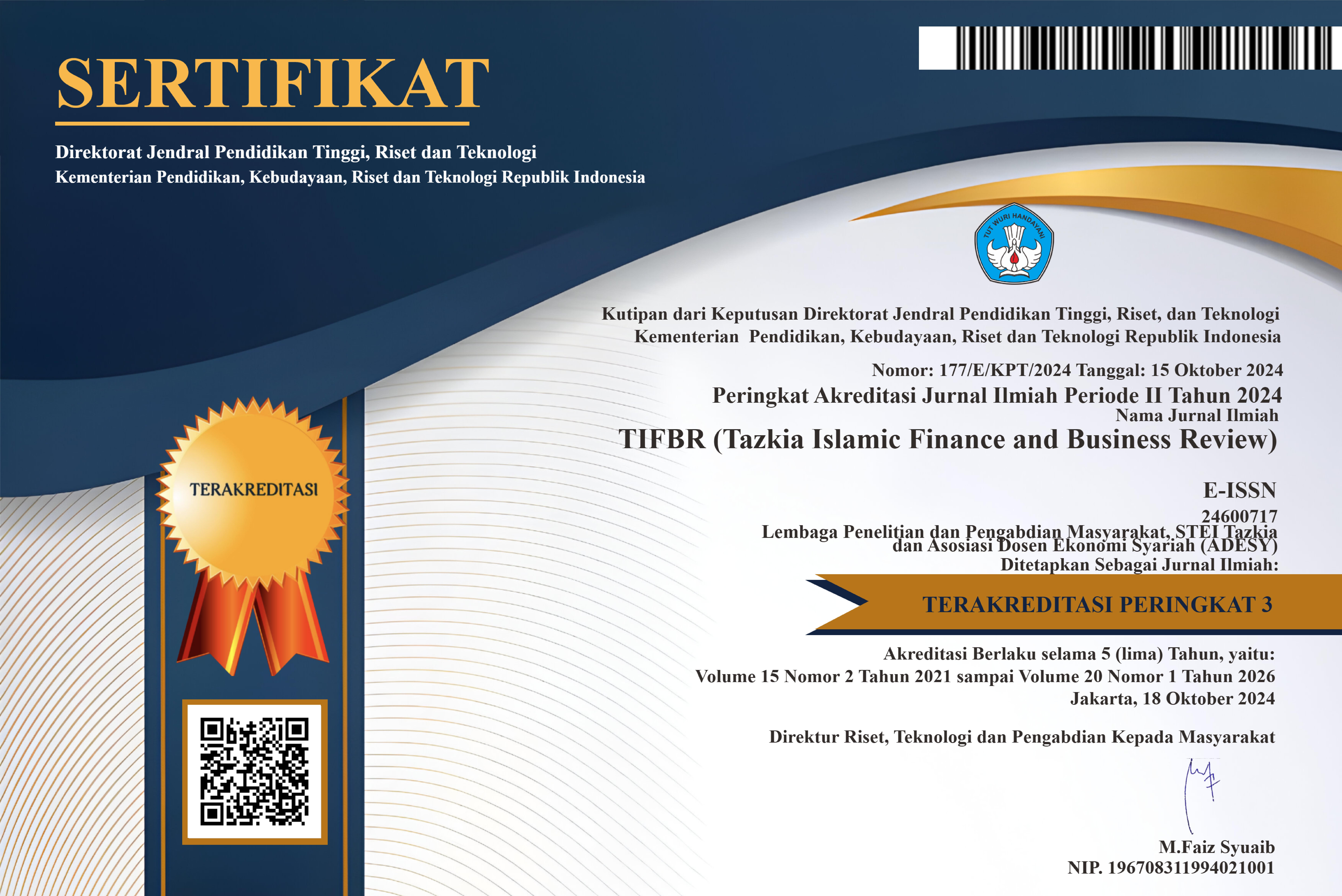Determining the Real Causes of Financial Crisis in Islamic Economic Perspective: ANP Approach
DOI:
https://doi.org/10.30993/tifbr.v9i2.85الكلمات المفتاحية:
Financial crisis، Islamic economic perspective، ANPالملخص
Objective – The purpose of this study is to determine the real causes of financial crisis from Islamic economic perspective.
Methods - This study applies Analytic Network Process (ANP) to determine the real causes of financial crisis from Islamic economic perspective to be able to formulate the real solutions to end financial crisis.
Results - The ANP results show that the real causes of financial crisis from Islamic economic perspective are Social Instability (EXTERNAL FACTOR), Speculation (MISBEHAVIOR), Ineffective Fiscal System (UNSUSTAINABLE FISCAL SYSTEM), Hedonism (MISBEHAVIOR), Fractional Reserve Banking System (UNSTABLE MONETARY SYSTEM), Political Instability (EXTERNAL FACTOR), Corruption (POOR GOVERNANCE), Interest Rate (UNSTABLE MONETARY SYSTEM), Fiat Money (UNSTABLE MONETARY SYSTEM), and the Wrong Man in the Wrong Place (POOR GOVERNANCE). These main real causes should be removed gradually in order to systematically and gradually improve the stability of financial system so that financial crisis will not reappear again and again in the future.
Conclusions - Financial crisis would not happen under Islamic economic system if all Allah’s laws in financial dealings were followed. Financial crisis in conventional economic system could be prevented or lessened by gradually adopting Islamic economic and finance laws and regulations, partly or fully, especially the main pillars of Islamic financial system, namely the prohibition of ribā (usury or interest), prohibition of maysir (gambling and game of chance or speculation) and prohibition of gharar (excessive uncertainty), in their many forms.
المراجع
Chapra, M.U., (1985). Towards a Just Monetary System. London, UK: The Islamic Foundation.
Hamidi, L., (2012). The Crisis: Krisis Manalagi yang Engkau Dustakan?. Jakarta: Republika.
Laeven, L., & Valencia, F., (2012). Systemic Banking Crises Database: An Update. IMF Working Paper WP/12/163. Washington, D.C.: International Monetary Fund.
Lietaer, B., Ulanowicz, R., & Goerner, S., (2009). Options for Managing a Systemic Bank Crisis. S.A.P.I.EN.S, 2(1).
Saaty, T. L. (2003). The Seven Pillars of the Analytic Hierarchy Process. Mimeo.
Saaty, T.L., & Vargas, L.G., (2006). Decision making with the analytic network process: economic, political, social and technological applications with benefits, opportunities, costs and risks. New York, NY: Springer Science + Business Media.
Saaty, T.L., (1994). Fundamentals of Decision Making. Pittsburgh, PA: RWS Publication.
التنزيلات
منشور
كيفية الاقتباس
إصدار
القسم
الرخصة

Tazkia Islamic Finance and Business Review (TIFBR) is licensed under a Creative Commons Attribution-NonCommercial 4.0 International License.
Authors who publish with this journal agree to the following terms:
- Authors retain copyright and grant the journal right of first publication with the work simultaneously licensed under a Creative Commons Attribution License that allows others to share the work with an acknowledgment of the work's authorship and initial publication in this journal.
- Authors are able to enter into separate, additional contractual arrangements for the non-exclusive distribution of the journal's published version of the work (e.g., post it to an institutional repository or publish it in a book), with an acknowledgment of its initial publication in this journal.
- Authors are permitted and encouraged to post their work online (e.g., in institutional repositories or on their website), as it can lead to productive exchanges, as well as earlier and greater citation of published work (See the Effect of Open Access).

















